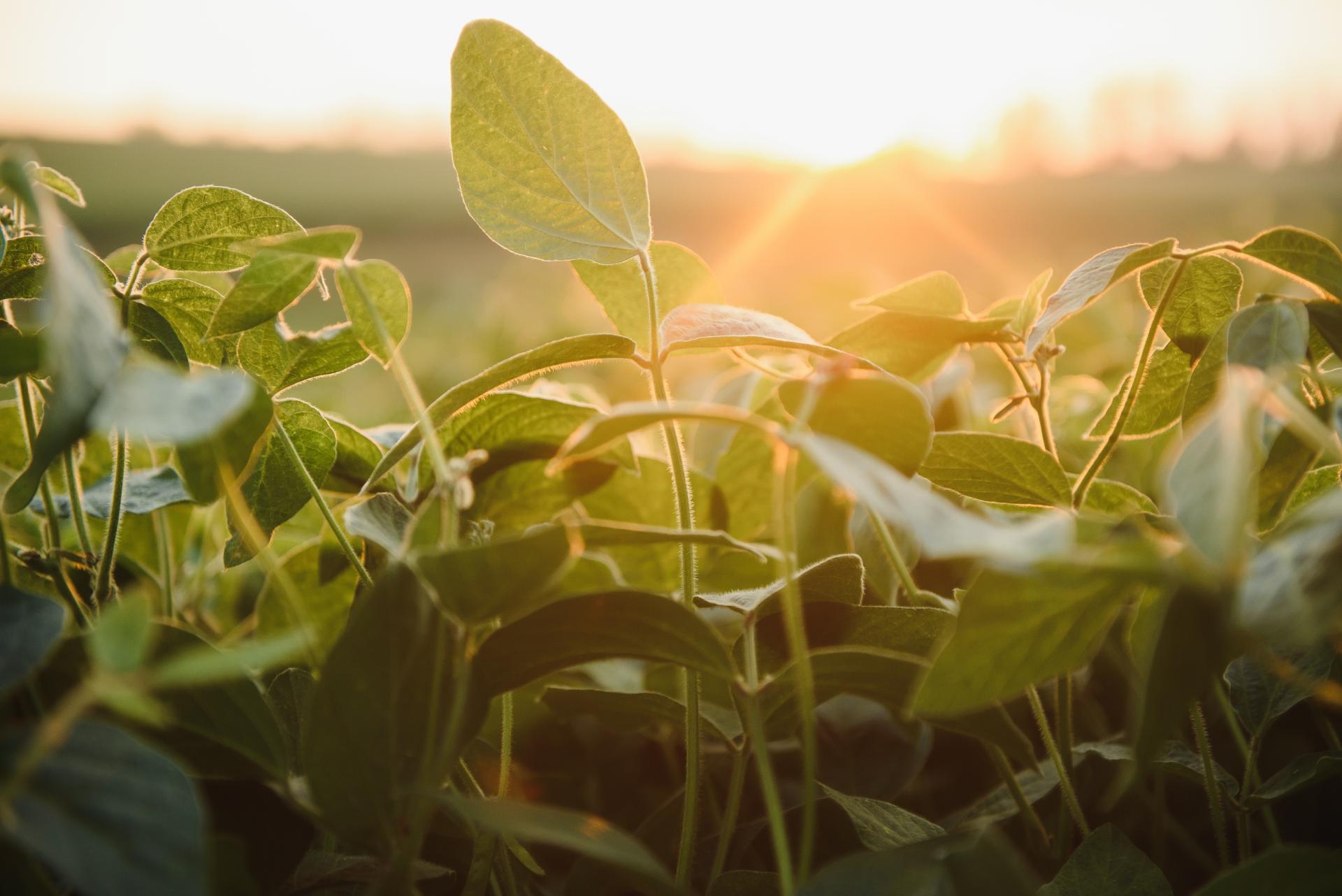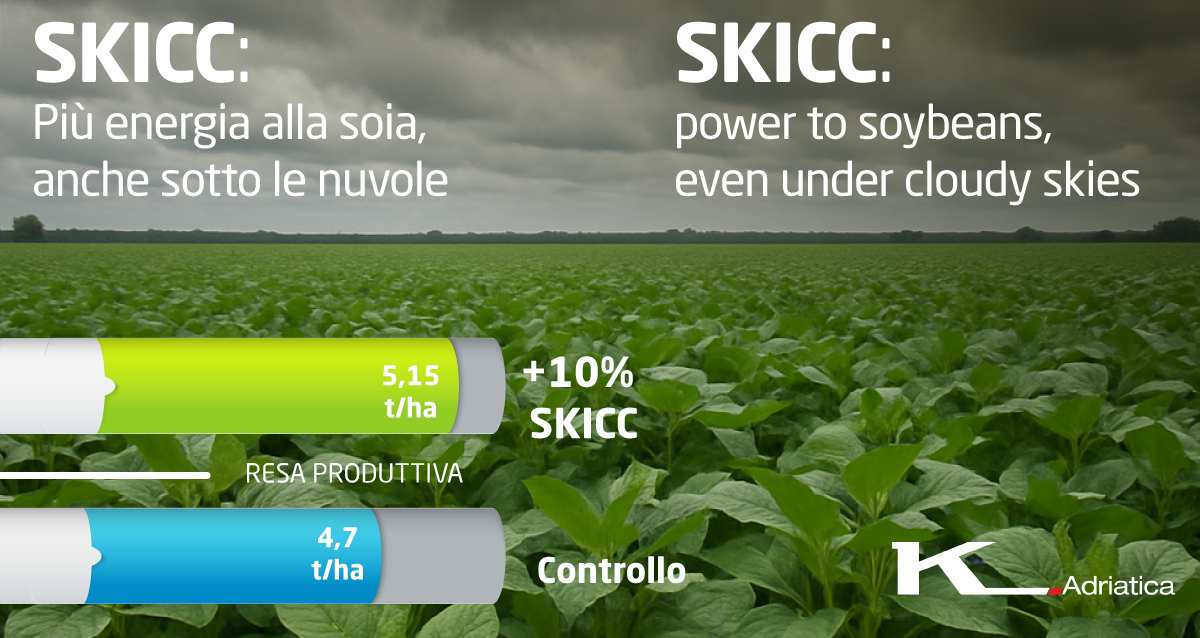
SKICC: More Energy for Soybeans, Even Under Challenging Conditions

In recent years, soybean cultivation has gained strategic importance in Italian agriculture, thanks to its ability to enrich cropping systems and offer a sustainable alternative among grain legumes. However, to fully express its productive potential, soybean requires high photosynthetic efficiency and optimal assimilation of nutrients—especially during key phenological stages such as nodule formation, flowering, and pod set.
These are precisely the aspects targeted by SKICC, the physiological biostimulant from K-Adriatica, already known for its positive effects on chlorophyll synthesis, nutrient use efficiency (NUE), and overall productivity. A recent trial conducted in Brazil, at the GAPES research center (Goiás), confirmed its effectiveness even under particularly challenging environmental conditions—characterized by stress from low light radiation due to frequent cloud cover and heavy rainfall.
Field Trials in Brazil: SKICC Proves Its Value
As part of a three-year introduction plan, during the 2024/2025 season, SKICC was tested on the ‘Guepardo’ soybean variety against both commercial biostimulants and an untreated control. The most effective application protocol combined treatments at sowing and at the V2 stage, resulting in a yield increase of approximately 10% compared to the control (5.15 t/ha vs. 4.7 t/ha). This result outperformed most of the tested products, indicating a consistent and repeatable trend toward increased productivity. These findings confirm previous years’ observations, where SKICC showed its ability to increase chlorophyll content, improve calcium and boron uptake and redistribution, and support flowering and pod development even under suboptimal conditions.
The trial results align with a study conducted by the University of São Paulo, published in Plants (Galeriani et al., 2022), which demonstrated that a single foliar application of calcium and boron at early flowering can enhance photosynthetic efficiency and significantly increase soybean yield.
In particular, treated plots showed a 10–13% increase in the number of pods and seed yield per plant compared to controls, with no negative impact on seed quality.
SKICC: Effective Even When Conditions Are Not Ideal
SKICC delivers calcium and boron in highly available forms, complemented by glycine—an essential amino acid in chlorophyll synthesis and metabolic regulation. This formulation is particularly effective in:
- Supporting photosynthesis, even in low-light conditions;
- Enhancing pod setting and improving pod quality;
- Optimizing the plant’s nutritional efficiency during peak demand phases.
Recommended Application Stages for SKICC:
- V4 (advanced vegetative stage): to enhance photosynthetic activity;
- R1–R2 (beginning of flowering and pod set): when calcium and boron are crucial for reproductive success;
- V2 or in-furrow at sowing: especially in areas prone to early abiotic stress (water or light-related), to stimulate root development and improve early plant vigor.
Field trial results, both in South America and in more local contexts, demonstrate that SKICC is an effective biostimulant to maximize soybean yield potential—especially when the goal is to optimize nutrition during reproductive stages or to respond to environmental limitations. When integrated into a targeted nutritional strategy, SKICC is a concrete tool for increasing yield, efficiency, and production stability, in line with a modern and sustainable approach to agriculture.







